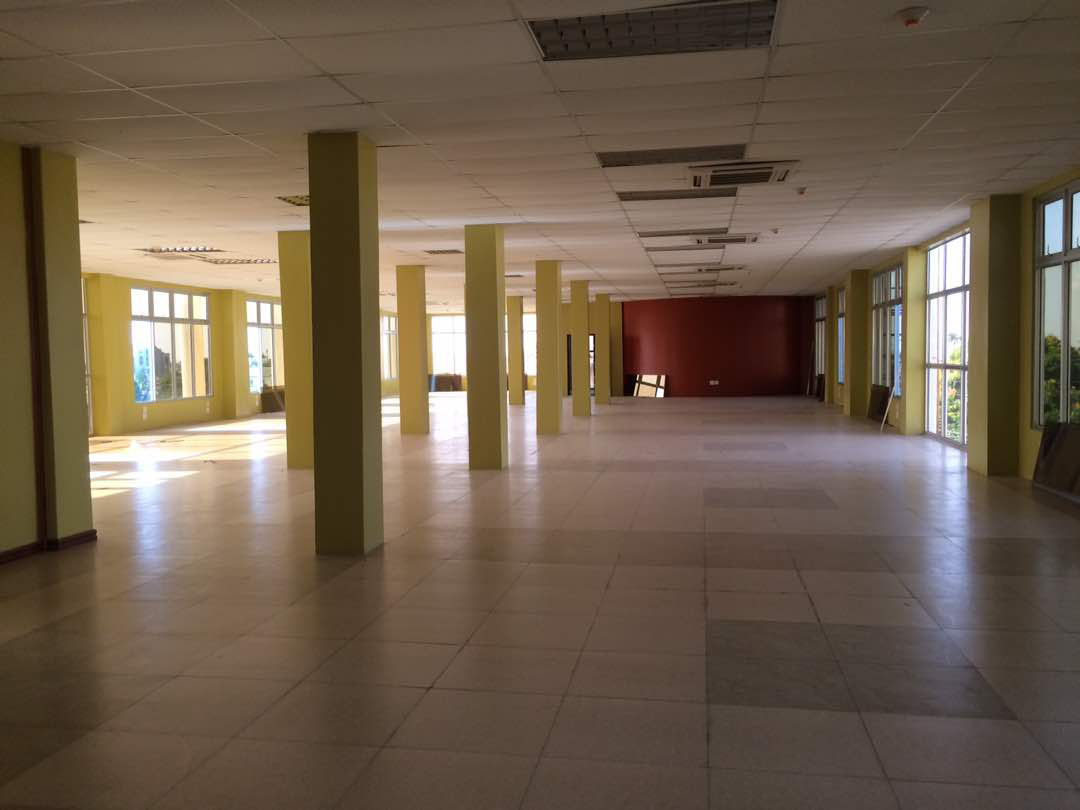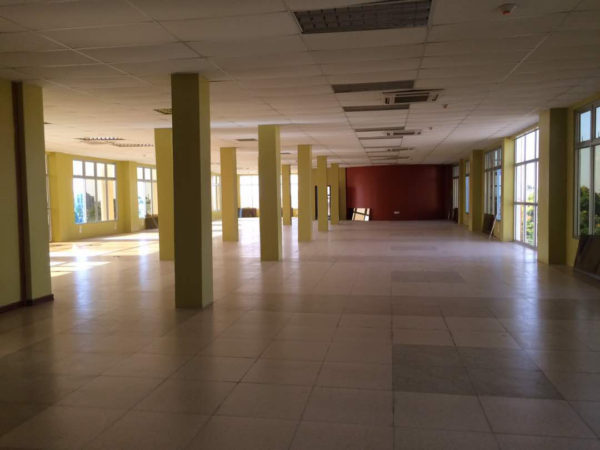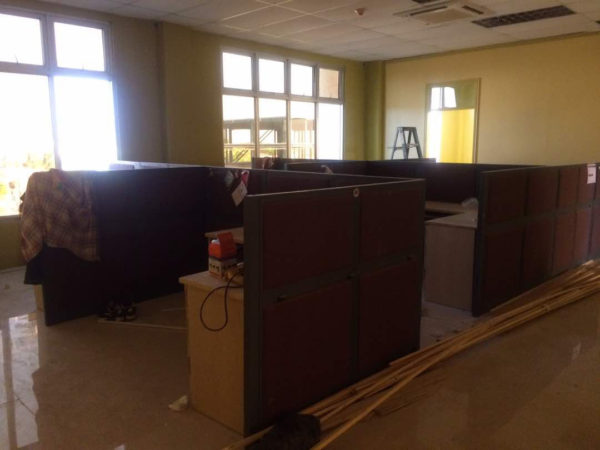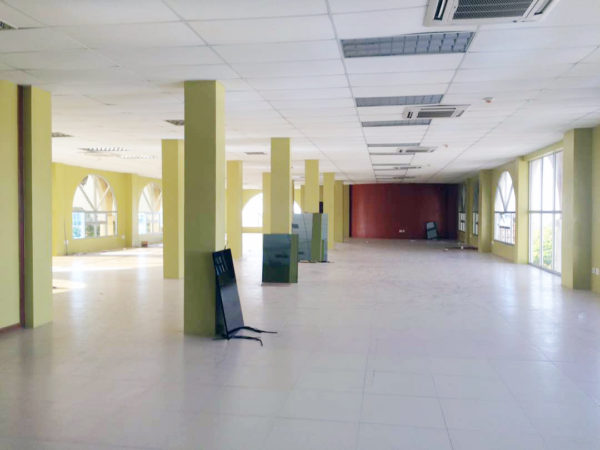With the University of Guyana (UG) council rejecting a plan to rent the complex at Camp and Lamaha streets, in Georgetown, the plans by one of its intended sub-lessees, the Ministry of Public Health’s Maternal and Child Health Department, to occupy the building now appear to be in limbo.
“The Maternal and Child Health was supposed to move in two or so weeks ago. Everything seemed to be going well then they heard UG didn’t get the permission…,” Public Relations Officer of the Ministry of Public Health, Terrence Esseboom told Stabroek News yesterday.
“There is a deal between the Ministry of Health and the University of Guyana where we would sublease that part… the last update I got from PS [Permanent Secretary] is that they will be going, but when I cannot say,” he added.
Stabroek News visited the facility yesterday and works were ongoing to remodel the third floor to accommodate an office. No works, excepting for the fixing of a broken window on the fourth floor, were being done on the other four storeys.
Workmen on the floor told this newspaper that they were employed by the Ministry of Public Health and could not speak for the other floors.
Esseboom said that he was not privy to the rental agreements and costs and will wait until Minister of Public Health Volda Lawrence returns next week to address the issue.
The University Council has rejected a proposal, championed by UG Vice-Chancellor Professor Ivelaw Griffith for renting the building, which is owned by Neal Sukhlal of Impressions Inc., at a cost of the local equivalent of US$28,000 per month.
Last November, UG’s Director of the Office of Strategic Initiatives Dr. Fitzgerald Yaw had told Stabroek News that they were scouting buildings for an off-campus centre in downtown Georgetown. He said that the choice building should not only sustain itself but will bring additional revenues for the cash-strapped institution.
At the time, he had pointed to the Camp Street building, saying that it was one of many being looked at.
“The selected UG downtown building [campus], after our due diligence, is expected to house a number of entities and offices, some of which are projected to be revenue generators,” he had noted.
Yaw informed that the revenue generators for the central Georgetown site will be a conference room that can be rented out to the public for functions, a business and graduate school, named the School of Entrepreneurship and Business Innovation (SEBI), and a business development unit.
UG was also looking to have a building that can also accommodate its Research and Innovative Fund’s Office and planned Philanthropy, Alumni and Civic Engagement (PACE) offices.
Further, he explained that the university will ultimately have to build its own downtown campus, but in the meantime it needs to rent, while land and construction matters are worked out.
As a result, he said that the Camp and Lamaha Streets building was being explored for rental, but first a financial viability evaluation would be conducted before the university decides on tenancy.
This newspaper understands that in a bid to promote the position to rent, a document was circulated to the members of the Council by the Vice Chancellor and it gave a breakdown of plans and overheads for renting the building.
But the Council rejected the proposal, saying that taking on the responsibilities of renting a building for nearly $6M per month was nonsensical. One council member told Stabroek News that it “does not seem the sensible thing to do at this time” and that before looking to rent a building where only about 60 students could be facilitated, it was better to “invest in a structure of its own with that same money.”








